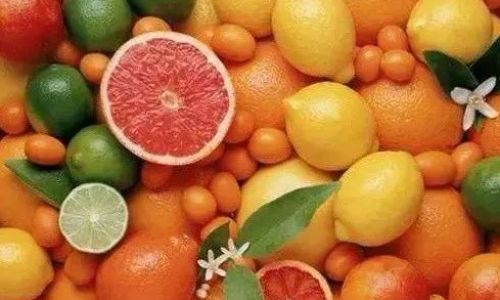Introduction
Oranges, with their vibrant hue and tangy sweetness, are among the world’s most beloved fruits. Yet, beneath their bumpy, aromatic rinds lies a question that has intrigued both casual eaters and botanical enthusiasts alike: Do oranges have red hearts? At first glance, the answer seems straightforward—oranges are orange, after all. However, nature’s palette is far more nuanced than meets the eye. This article delves into the anatomy of oranges, the genetic and environmental factors that influence their coloration, and the fascinating existence of red-fleshed varieties that challenge conventional wisdom. By examining the science behind citrus diversity, we uncover the truth about whether oranges can indeed possess a crimson core.

The Anatomy of an Orange: Beyond the Surface
To understand whether oranges have red hearts, one must first grasp the fruit’s structural composition. An orange, like all citrus fruits, is a hesperidium—a modified berry with a leathery rind and segmented interior. Its anatomy comprises several distinct layers:
- Exocarp (Flavedo): The outermost layer, commonly called the peel, is dotted with oil glands that release aromatic compounds when squeezed or grated.
- Mesocarp (Albedo): The white, spongy pith beneath the peel, rich in pectin and fiber.
- Endocarp: The fleshy segments (or vesicles) that house the juice-filled sacs and seeds.
The color of an orange’s flesh is primarily determined by pigments called carotenoids, such as beta-carotene and lycopene, which impart hues ranging from yellow to deep orange. In most common varieties—like Valencia, Navel, and Jaffa oranges—the central membrane surrounding the segments (the locular membrane) and the flesh itself are uniformly orange or pale yellow. However, the concept of a “red heart” implies a deeper, more intense coloration at the fruit’s core, a trait rarely seen in mainstream cultivars.
Do Most Oranges Have Red Hearts? The Short Answer
In the vast majority of oranges grown and consumed globally, the flesh does not exhibit red pigmentation. The idea of a “red heart” is a misnomer when applied to typical supermarket varieties. However, nature thrives on exceptions, and one group of oranges defies this norm: blood oranges. These unique fruits possess a striking crimson or ruby-red flesh, often streaked with deeper hues near the center, earning them their evocative name. But are blood oranges truly oranges, and what explains their sanguine coloration?
Blood Oranges: Nature’s Crimson Exception
Blood oranges (Citrus sinensis ‘Blood’) are a category of oranges characterized by their red-pigmented flesh, which ranges from subtle pink streaks to a near-maroon hue. This coloration is caused by anthocyanins, water-soluble pigments also found in blueberries, cherries, and red cabbage. Unlike carotenoids, which are present in all citrus fruits, anthocyanins are rare in oranges and typically develop under specific environmental conditions.
The Science Behind the Red
The red flesh of blood oranges is a result of two primary factors:
- Genetic Mutation: Blood oranges carry a genetic variant that enables the production of anthocyanins. This mutation is believed to have originated in Sicily, where the first blood orange cultivars were documented in the 15th century.
- Environmental Triggers: Cold temperatures during fruit maturation stimulate anthocyanin synthesis. In regions with cool nights—such as the Mediterranean, California, and parts of Australia—blood oranges develop their signature color.
Varieties of Blood Oranges
Several blood orange cultivars exist, each with distinct flavor profiles and pigmentation patterns:
- Moro: The darkest and most intensely colored variety, with a deep red flesh and a raspberry-like tartness.
- Tarocco: Known as the “half-blood” orange, it has a lighter red blush and a sweet, berry-tinged flavor.
- Sanguinello: Features a reddish-orange flesh and a balance of sweetness and acidity.
Cultivation and Availability
Blood oranges thrive in subtropical climates with distinct seasonal temperature fluctuations. Their cultivation is concentrated in Italy, Spain, and the U.S. states of California and Florida. While once considered a niche product, blood oranges have gained popularity in gourmet cuisine and juice blends, thanks to their visual appeal and complex flavor.
Why Don’t All Oranges Have Red Hearts?
The absence of red flesh in most oranges boils down to genetics and evolution. Standard orange varieties lack the genes necessary to produce anthocyanins in their flesh. Over centuries of cultivation, growers selected for traits like juice content, seedlessness, and peel thickness, inadvertently favoring carotenoid-rich fruits over potential red-fleshed mutants. Blood oranges, by contrast, were preserved in regions where their unique coloration and flavor were valued, despite lower yields compared to mainstream cultivars.

Debunking Myths: Is the Red Heart a Sign of Ripeness or Artificial Coloring?
A common misconception is that red-fleshed oranges are either unripe or dyed. In reality, the crimson hue of blood oranges is entirely natural, though its intensity can vary based on growing conditions. Artificially colored oranges do exist in some markets, but these are typically standard varieties sprayed with food-safe dyes to enhance visual appeal—a practice distinct from the inherent pigmentation of blood oranges.
Nutritional Differences: Do Red-Fleshed Oranges Offer More Benefits?
Blood oranges not only dazzle the eye but also pack a nutritional punch. Their anthocyanin content contributes to higher antioxidant levels compared to regular oranges, potentially offering anti-inflammatory and heart-healthy benefits. Additionally, blood oranges retain the vitamin C, fiber, and folate found in their conventional counterparts, making them a nutritious choice.
Culinary Applications: Beyond the Breakfast Table
The vivid color and complex flavor of blood oranges lend themselves to creative culinary uses:
- Juicing: Blood orange juice is prized for its balanced sweetness and tartness, often used in cocktails, marinades, and desserts.
- Salads: Sliced blood oranges add a pop of color and a hint of bitterness to green salads.
- Marmalades: Their natural pectin content makes them ideal for preserving.
The Broader World of Red-Fleshed Citrus
While blood oranges are the most famous red-fleshed citrus, they are not alone. Other species, such as the Citrus unshiu (Satsuma mandarin) and hybrid varieties like the Cara Cara navel orange, exhibit pink to red flesh due to lycopene accumulation. However, these differ genetically from blood oranges, as their coloration stems from carotenoids rather than anthocyanins.
Conclusion: The Heart of the Matter
In answer to the titular question: most oranges do not have red hearts. The conventional orange varieties that dominate global markets—Valencia, Navel, and others—possess flesh colored by carotenoids, with no red pigmentation. However, the existence of blood oranges proves that nature loves to surprise. These crimson-fleshed gems, shaped by genetics and climate, offer a tantalizing exception to the rule. Whether enjoyed fresh, juiced, or in a gourmet dish, blood oranges remind us that even the most familiar fruits harbor hidden wonders. So the next time you peel an orange, consider the journey from seed to supermarket—and the rare, red-hearted outlier that reminds us of citrus’s boundless diversity.
Final Thoughts
The story of the red-hearted orange is a testament to the interplay between genetics, environment, and human cultivation. While the average orange remains steadfastly orange, the blood orange stands as a vibrant reminder that beauty—and biology—often lies in the details. Whether you’re a curious eater, a budding botanist, or simply someone who loves a good fruit mystery, the world of citrus offers endless fascination. And who knows? Perhaps somewhere in an orchard, a new hybrid is quietly developing a heart of gold, crimson, or even blue, waiting to redefine our understanding of what an orange can be.






0 comments